Tag Archives: John Sackton
Some in seafood industry see Trump as fishermen’s friend, but tariffs could make for pricier fish
 The incoming administration of President-elect Donald Trump is likely to bring big changes for one of the oldest sectors of the U.S. economy, seafood, and some in the industry believe the returning president will be more responsive to its needs. Economic analysts paint a more complicated picture, as they fear Trump’s pending trade hostilities with major trading partners Canada and China could make an already pricy kind of protein more expensive to consumers. Conservationists also fear Trump’s emphasis on government deregulation could jeopardize fish stocks that are already in peril. But many in the commercial fishing and seafood processing industries said they are excited for Trump’s second presidency. They said they expect he’ll allow fishing in protected areas as he did in his first presidency, crack down on offshore wind expansion and cut back regulations they describe as burdensome. And they expect a marked shift from the administration of President Joe Biden, who prioritized ocean conservation and championed wind power from the start. Video, more, >>CLICK TO READ<< 10:26
The incoming administration of President-elect Donald Trump is likely to bring big changes for one of the oldest sectors of the U.S. economy, seafood, and some in the industry believe the returning president will be more responsive to its needs. Economic analysts paint a more complicated picture, as they fear Trump’s pending trade hostilities with major trading partners Canada and China could make an already pricy kind of protein more expensive to consumers. Conservationists also fear Trump’s emphasis on government deregulation could jeopardize fish stocks that are already in peril. But many in the commercial fishing and seafood processing industries said they are excited for Trump’s second presidency. They said they expect he’ll allow fishing in protected areas as he did in his first presidency, crack down on offshore wind expansion and cut back regulations they describe as burdensome. And they expect a marked shift from the administration of President Joe Biden, who prioritized ocean conservation and championed wind power from the start. Video, more, >>CLICK TO READ<< 10:26
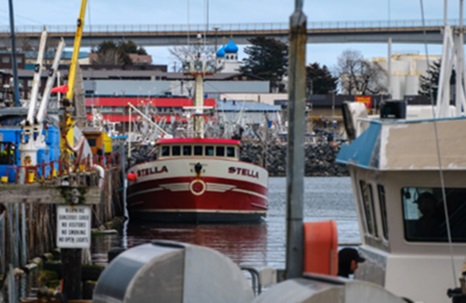
The seafood industry is in trouble. Processors and policy makers blame Russia.
Alaska waters produce the most seafood in the country, and many of the state’s coastal communities depend on commercial fisheries to sustain their economy. But Alaska’s fisheries are facing a massive economic slump right now and policymakers are increasingly blaming flooded global markets. The private sector and federal policymakers are teaming up to try to stop the bleeding. Last year was brutal on the seafood industry. Processing companies and fishermen alike suffered amid cratering prices, and they blamed Russia for flooding markets. Republican U.S. Sen. Dan Sullivan, from Alaska, pointed his finger at the country at a news conference on May 23. “Russians have essentially admitted they’re not just at war in Ukraine, they’re at war with the American fishing industry,” he said. more, >>CLICK TO READ<< 16:03
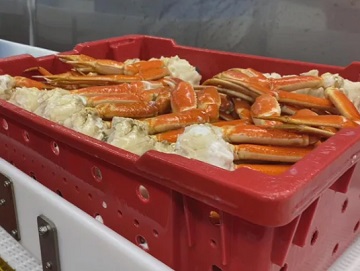
Price outlook diverges for Canada’s top 2 seafoods – Snow crab prices plunged by 60 % in 2022
Canada’s lobster industry is poised to claw its way out of a down year, say analysts, while unsold snow crab stuck in cold storage remains an anchor dragging on the bottom line. Snow crab sales sank and prices plunged 60 per cent in 2022, thanks in part to U.S. consumers who stayed away from luxury seafood as they were battered by inflation. Lobster also took a hit last year, with prices down 30 per cent. The value of Canadian live lobster exports dropped as well, but volumes actually ticked up slightly. Kelly Zhuang of World Link Food Distributors in Nova Scotia says 800 tonnes of live lobster is flown to China from Halifax and Moncton per week. And more charters are expected.>click to read< 13:55

“We’re solid. We’re unified” – Inside Kodiak’s crab standoff
The nearly 6-million-pound quota was the highest in decades. And some people spent more than $100,000 to buy a permit to fish this year, said Kevin Abena, one of the leaders of the Kodiak Crab Alliance Cooperative. But fishermen’s hopes for a banner season are now in limbo, as the 130 boats in the Kodiak tanner crab fleet are on strike, holding out for higher prices from the seafood processors that typically buy, package and resell their catch. But processors and industry experts say the fishermen are fighting larger market forces that make it unlikely they’ll get much more than the $3.25 a pound that Kodiak-based plants have already offered, less than half than last year’s $8 a pound price. >click to read< 10:48

U.S. inflation is sinking Canadian lobster and snow crab prices – U.S. consumers giving up pricey seafood
The price of Canada’s two most valuable seafoods is crashing this year as consumers recoil from the impact of rising inflation. The price of snow crab has plummeted in 2022 between 60 and 65 per cent while lobster prices have fallen about 35 per cent. Demand that had built up during the pandemic for all types of frozen and fresh seafood powered the Nova Scotia industry to a record-breaking year in 2021 with revenues reaching $2.5 billion, led by the two shellfish. But high prices for frozen snow crab and frozen lobster, along with a modest increase in the price of live lobster last year, are melting in 2022. “And the reason is that consumers backed away from the high prices at the same time that they began to be buffeted by these other problems of high gasoline prices, inflation and concern about lack of economic support,” John Sackton said. >click to read< 09:48
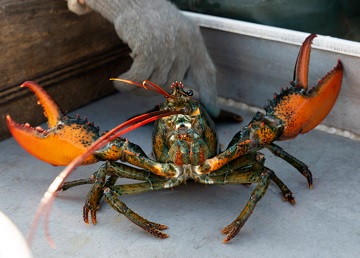
Lobster prices dropping
The price of lobster and seafood at large has shot up in recent years, and the price to lobster fishermen at the docks increased by about 60% last year. But lobster prices appear to be leveling off, and some retailers are selling the prized crustaceans for a couple dollars less than last year. Members of the industry said the price to fishermen is also falling at a time when they are struggling with high bait and fuel prices and costly gear conversations intended to try to protect rare whales. “And that’s why it’s hard, if bait was up and fuel was up and the price of lobsters was up, you’d be where you always are,” said Kristan Porter, president of the Maine Lobstermen’s Association. “But with those down, that makes it hard to justify going in.” >click to read< 12:08
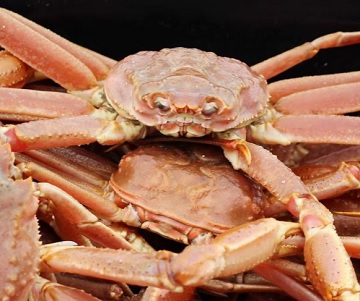
Snow crab prices plummet in Newfoundland
It wasn’t the news fish harvesters in Newfoundland and Labrador wanted to hear. They’ll get less for their snow crab after today, as the result of a decision by the province’s fish price setting panel. After reviewing a request from the Association of Seafood Producers and arguments by the Fish Food and Allied Workers, the panel went with the processors’ pitch of $6.15 per pound. That’s down nearly 20 per cent from the $7.60 per pound price that was set for the start of the season on April 1. In Nova Scotia, fish harvesters also saw a drop in snow crab prices a couple of weeks ago. They are now getting $8.25 a pound for snow crab, according to Gordon Beaton, local president with the Maritime Fishermen’s Union. >click to read< 11:06
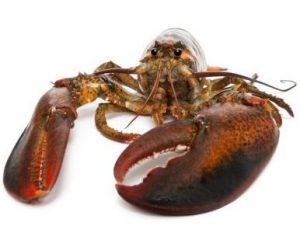
We’ll take your lobsters, eh? Canadian imports from US soar
Trade hostility from across the ocean was supposed to take a snip out of the U.S. lobster business, but the industry is getting a lifeline from its northern neighbor. Heavy demand from Canada is buoying American lobster as both countries head into the busy holiday export season, according to federal statistics and members of the industry. It’s a positive sign for U.S. seafood dealers and fishermen, even as the industry struggles with Chinese tariffs.,, >click to read<12:05
Snow crab prices could be clawed back
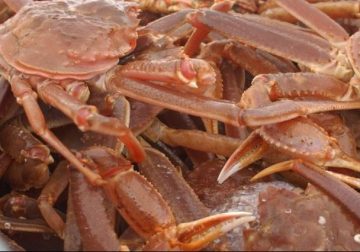 Halfway around the world there’s an uneasiness that may land this year’s Newfoundland snow crab industry in troubled waters. While the announced increase in price between the province’s harvesters and processors this year appears to have somewhat offset concerns about a drastic drop in Newfoundland snow crab quotas, key Japanese buyers remain uncertain about paying a high price through the season. The minimum price per pound for snow crab this year for harvesters was set at $4.39 — the highest price ever in this province — by the Standing Fish Price Setting Panel, which chose the harvesters’ proposed price over the processors’ offer of $4.10. John Sackton, a longtime North American seafood market analyst and president and publisher of SeafoodNews.com, said Japanese buyers find themselves in an uneasy situation. He said their normal buying process — in which the buyers like to work on a single-established price — has been disrupted. click here to read the story 22:35
Halfway around the world there’s an uneasiness that may land this year’s Newfoundland snow crab industry in troubled waters. While the announced increase in price between the province’s harvesters and processors this year appears to have somewhat offset concerns about a drastic drop in Newfoundland snow crab quotas, key Japanese buyers remain uncertain about paying a high price through the season. The minimum price per pound for snow crab this year for harvesters was set at $4.39 — the highest price ever in this province — by the Standing Fish Price Setting Panel, which chose the harvesters’ proposed price over the processors’ offer of $4.10. John Sackton, a longtime North American seafood market analyst and president and publisher of SeafoodNews.com, said Japanese buyers find themselves in an uneasy situation. He said their normal buying process — in which the buyers like to work on a single-established price — has been disrupted. click here to read the story 22:35
Objections registered to 3PS MSC cod certification will be heard by adjudicator
 A hearing on whether the Canadian southern Newfoundland cod fishery in 3 PS will get MSC certification was held on Feb. 10. The Southern Newfoundland cod fishery, in the Northwest Atlantic Fisheries Organization, has completed its MSC assessment, and the certifier has recommended certification for the major fishery gear types for both inshore and offshore cod. This certification has been in process since 2013, and is being strongly supported by WWF and the clients, Icewater Fisheries and Ocean Choice International. The certification is a requirement for sales of this cod into the European market. Read the rest here 13:55
A hearing on whether the Canadian southern Newfoundland cod fishery in 3 PS will get MSC certification was held on Feb. 10. The Southern Newfoundland cod fishery, in the Northwest Atlantic Fisheries Organization, has completed its MSC assessment, and the certifier has recommended certification for the major fishery gear types for both inshore and offshore cod. This certification has been in process since 2013, and is being strongly supported by WWF and the clients, Icewater Fisheries and Ocean Choice International. The certification is a requirement for sales of this cod into the European market. Read the rest here 13:55
Labrador shrimp fishery seeing boon from rising ocean temperatures
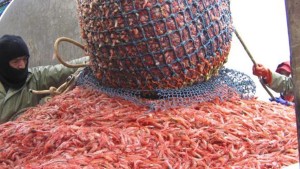 A journalist who covers the seafood industry says global warming may be wreaking havoc on the world’s fish stocks as a whole, but could be related to bigger shrimp catches recently off the coast of Labrador. John Sackton is the publisher of SeafoodNews.com, a website that claims to be the most widely-read daily seafood publication in North America. He told CBC Radio’s Labrador Morning that this past year has been a boon for Labrador’s shrimp fishery. Read the article here 08:11
A journalist who covers the seafood industry says global warming may be wreaking havoc on the world’s fish stocks as a whole, but could be related to bigger shrimp catches recently off the coast of Labrador. John Sackton is the publisher of SeafoodNews.com, a website that claims to be the most widely-read daily seafood publication in North America. He told CBC Radio’s Labrador Morning that this past year has been a boon for Labrador’s shrimp fishery. Read the article here 08:11
Salmon markets show steady seasonal variations at wholesale
 This is Fish Radio. I’m Laine Welch …. Salmon prices vary according to the seasons. Salmon prices at wholesale show very marked seasonal variations for both wild and farmed fish. It’s a pattern that’s been tracked by Urner Barry- the nation’s oldest commodity market watcher since 1895. Read more here 07:08
This is Fish Radio. I’m Laine Welch …. Salmon prices vary according to the seasons. Salmon prices at wholesale show very marked seasonal variations for both wild and farmed fish. It’s a pattern that’s been tracked by Urner Barry- the nation’s oldest commodity market watcher since 1895. Read more here 07:08
Potential big cut in Newfoundland inshore shrimp quota may create huge controversy
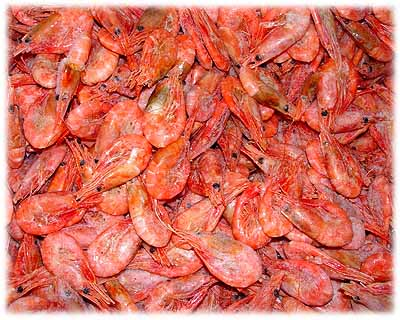 While most of the North Atlantic stocks of Pandalus borealis (coldwater or northern shrimp) have been eaten away by resurgent cod, in the last decade the shrimp stocks off Newfoundland, Canada, have been at very high levels. In most areas of the North Atlantic, shrimp stocks are declining. In Greenland and the Davis strait, there should be a reduction of about 20,000 metric tons in 2014. Read more here undercurrentnews.com 08:10
While most of the North Atlantic stocks of Pandalus borealis (coldwater or northern shrimp) have been eaten away by resurgent cod, in the last decade the shrimp stocks off Newfoundland, Canada, have been at very high levels. In most areas of the North Atlantic, shrimp stocks are declining. In Greenland and the Davis strait, there should be a reduction of about 20,000 metric tons in 2014. Read more here undercurrentnews.com 08:10
Walmart’s need for Russian pink salmon likely exceeds available MSC supply – John Sackton, Seafoodnews.com
 First, in their recent letter to suppliers, Walmart acknowledged that there was only a single Fishery Improvement Project (FIP) approved by SFP, which they called a ‘very small project led by WWF for chum salmon in the Tugur River of Russia.’ They said that there were other ongoing discussions in both Russian and the US, but that at present none of these had resulted in publicly announced improvement projects. Meanwhile, the available Russian MSC salmon is not sufficient to meet Walmart’s needs. continued@savingseafood
First, in their recent letter to suppliers, Walmart acknowledged that there was only a single Fishery Improvement Project (FIP) approved by SFP, which they called a ‘very small project led by WWF for chum salmon in the Tugur River of Russia.’ They said that there were other ongoing discussions in both Russian and the US, but that at present none of these had resulted in publicly announced improvement projects. Meanwhile, the available Russian MSC salmon is not sufficient to meet Walmart’s needs. continued@savingseafood
Alaska’s white hat turns a little grey – Editorial comment, by John Sackton, publisher of Seafoodnews.com
 Ouch. The allegations that American Seafoods used flow scales that understated the weight of its pollock catch on multiple vessels in 2011 is a black-eye for the Alaska pollock fishery. It is unfortunate that it comes at the same time the American industry is raising questions about the capability of the Russian pollock fleet to monitor and control catches. Some European buyers have flown into a panic, with one saying to ,,,continued @ Undercurrent News:
Ouch. The allegations that American Seafoods used flow scales that understated the weight of its pollock catch on multiple vessels in 2011 is a black-eye for the Alaska pollock fishery. It is unfortunate that it comes at the same time the American industry is raising questions about the capability of the Russian pollock fleet to monitor and control catches. Some European buyers have flown into a panic, with one saying to ,,,continued @ Undercurrent News:
Two opposing views of the Gulf Red Snapper Fishery
John Sackton — Feb 11, 2013 — A new allocation fight is taking place in the Gulf of Mexico with recreational charters, backed by the Coastal Conservation Association, preparing to steamroller commercial interests, and further restrict do![]() mestic red snapper from restaurant menus. Read more here
mestic red snapper from restaurant menus. Read more here
TOM ADAMS -Mr. Sackton’s recent analysis of the red snapper allocation fight that appeared in the recent Seafood.com News and SavingSeaFood.com website is woefully inaccurate. First and foremost, Mr. Sackton pits two specifically named organizations – the Coastal Conservation Association (CCA) and Gulf of Mexico Reef Shareholders Alliance – as being at opposite ends of the allocation battle for Gulf of Mexico red snapper. Read more here






 SEAFOOD.COM NEWS by John Sackton (Editorial Comment) – June 15, 2011 A
SEAFOOD.COM NEWS by John Sackton (Editorial Comment) – June 15, 2011 A



























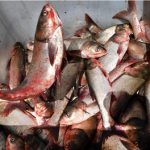
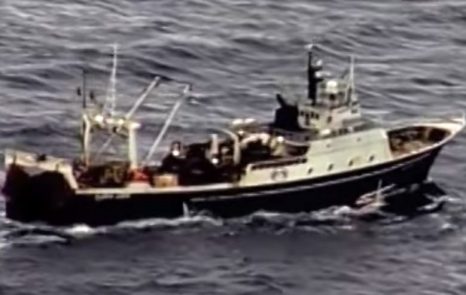
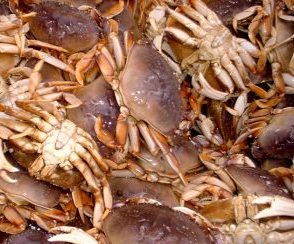
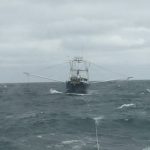
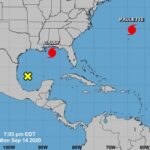
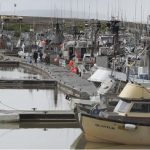
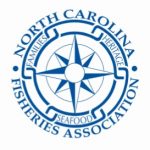
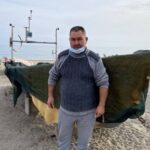

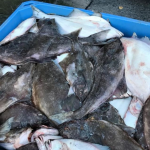



Greenpeace whines about John Sackton’s seafoodnews.com pollock redlisting comment while kissing undercurrents fanny
After numerous suggestions to Seafood.com’s John Sackton that his stories about Greenpeace might be more accurate if he took the time to check in with us, we finally concluded that if his biases were obvious to us, they were probably obvious to others as well. Read the rest here 08:31
Share this post